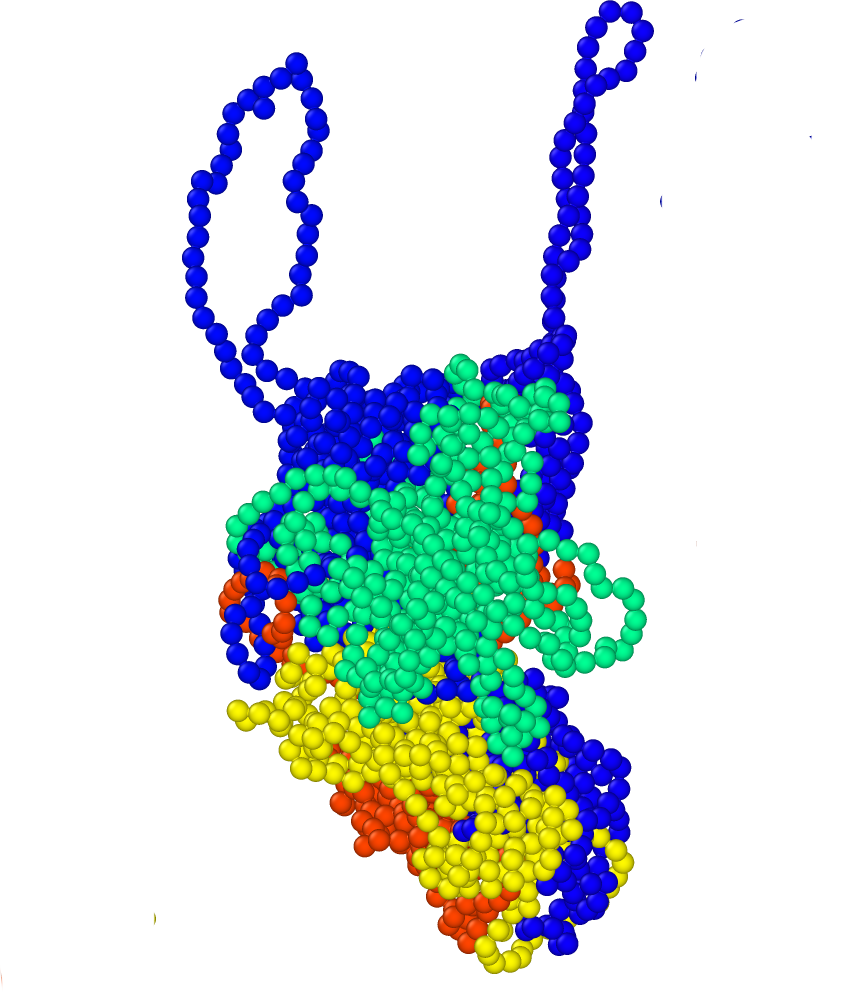Status:
Approved
Period
10-16 February 2020
Applicant
Dr. Emanuele Locatelli
Home Institution
Faculty of Physics, University of Vienna, Boltzmanngasse 5, 1090 Vienna
Host Contact
Prof. Angelo Rosa
Host Institution
Molecular and Statistical Biophysics group, Scuola Internazionale Superiore di Studi Avanzati (SISSA), Via Bonomea 265 – 34136 Trieste
Aim of the mission
The field of active polymers has emerged only very recently and results available mainly refer to polymers in two dimensions. A recent paper (V Bianco, E Locatelli, P Malgaretti. Phys. Rev. Lett., 121:217802, 2018.) has investigated the properties of active chains in three dimensions. In collaboration with Ass. Prof. Rosa, we decided to explore the properties of active polymers in melt conditions, focusing in particular on rings, to study the effect of the interplay between topology and self-propulsion. This project aims to study, by means of numerical simulations, the topological properties of a dense suspension (melt) of active polymers, investigating the structural and dynamical differences between linear and ring melts. The purpose of the STSM was to write an analysis code and discuss the results of numerical simulations, carried out both in Vienna and Trieste, of melts of active (self-propelled) ring polymers.
Summary of the Results
We performed Langevin Dynamics simulations in LAMMPS (lammps.sandia.gov/), an open source simulation code, which has been used extensively by both myself and Ass. Prof. Rosa. Before the STSM, we have carried out extensive numerical simulations of active ring melts; as reported in the motivation for the STSM, active rings seemed to need an anomalously long time to reach the steady state, starting from an equilibrated, unconcatenated, passive configuration. Intrigued by this behaviour, we asked Dr Smrek (who is also a member of EUTOPIA and works in Vienna) to join the collaboration and perform a preliminary analysis to determine the extent of threadings between pairs of rings with a sophisticated method called Minimal Surfaces Analysis. This preliminary results suggested that the rings, initially unconcatenated, linked together during the simulation, due to the action of the active forces and, most notably, limitations of the force fields used (standard Kremer-Grest model, WCA+FENE). The first task of the STSM was to write an optimised routine to calculate the linking number (based on Nonlinear Theory and Its Applications, IEICE, vol. 4, no. 1, pp. 104–110, 2013) and analyse in a more systematic way the simulated melts. We indeed found the presence of many links and, further, analysing the configurations with Kymoknot (Tubiana L., Polles G, Orlandini E, Micheletti C, The European Physical Journal E, 41(6), 72. 2018), of many knots. Thus the second task of the STSM was to modify the force fields used in order to avoid catenation events; as mentioned we used, up to that point, a standard Kremer-Grest polymer model, for which the occurrence of links in regular (passive) melts is an almost impossible event. We decided to keep the functional form of the force field intact and tune the parameters, in order to make concatenation impossible by tightening the connections between monomers, as well as making monomers more hard core-like, while maintaning their size fixed. After a couple of false attempts, we found a satisfactory solutions and we launched production runs with the same simulation protocol we were following up to that point, that is to start from equilibrated, unconcatenated passive melt at the same monomer density. We looked for the formation of links and knots in the new configurations, finding none (simulations now ran approximately for 1E6 MD time units). None of the system under investigation reached the steady state before the end of the STSM. Last, we also planned in detail the analysis on the dynamical and structural properties of the melts, to describe both the relaxation route and the steady state.
In summary, we have implemented a useful tool to analyse ring polymer melt conformations, in an efficient way. This has allowed us to understand the extent of our problem and to isolate its cause. Second we have successfully solved the problem of link and knot formation by appropriately tuning the simulation parameters; we are confident that, now, steady state relaxation will be reached relatively fast. We plan, once the simulations reach steady state, to perform extensive analysis, both by means of the computation of conventional quantities (as the mean square displacement or the radial distribution function of the centres of mass of the rings) and of more sophisticated techniques, like the aforementioned Minimal Surfaces Analysis.
Dissemination

